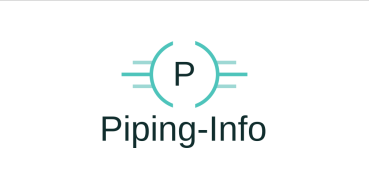Steam Piping Questions and Answers for the Piping Designers/Engineers
1. When installing steam traps, what is the ideal distance between the heat exchanger and the trap outlet?
12-36 inches (0.3-0.9 m).
2. After piping has been completed in a new steam system or branch, what should be done next?
Blow down the system.
3. Should a check valve be provided to allow automatic drainage of a portion of the steam system when pressure has been turned off?
No.
4. When should an automatic drain valve be used in conjunction with steam traps?
When the traps may be subjected to freezing conditions.
5. Will reduced differential pressure reduce trap capacity?
Yes, it will.
6. How much will 1 PSI (0.68 bar) of positive differential pressure lift condensate?
2 feet (0.6 m).
7. What do I need to consider for an outdoor installation?
Keep three things in mind: Do not oversize a steam trap; keep discharge lines as short as possible; and insulate all supply, discharge and return lines.
8. Two identical steam coils are in parallel in an air handler. Under those circumstances, can one trap serve both coils?
No
9. Should trap by-passes be a part of every trap installation?
Not necessarily.
10. Is it always best to oversize steam traps, just to be sure?
No.
11. Unions usually make it easy to replace a trap quickly. But when does a union slow down the replacement?
When it is installed in-line and the piping is well anchored.
12. What is "syphon drainage?"
Syphon drainage refers to installation of a trap above the device being drained.
13. Safety drain traps are often used when condensate must be lifted to an overhead return. Since they are connected in parallel, it stands to reason that the same pressures reach the primary trap and the safety drain trap. Why doesn't the safety drain discharge at the same time as the primary trap?
Because the safety drain discharge is installed above the primary trap.
14. A large heat exchanger is operated with a modulated steam pressure. Maximum steam pressure is 30 psig (2 bar). The condensate return line is located 12 feet (3.7 m) overhead. What trap is recommended?
A pumping trap plus F&T in series.
15. Is installing freeze-proof all-stainless traps a valid method to protect outdoor traps from freezing?
No.
16. When syphon drainage is necessary, should the syphon pipe be sized one size smaller than the nominal size for the trap?
Yes, but never less than 1/2" (15 mm).
17. Whenever possible, should condensate be pumped versus gravity drainage?
No.
18. What might result when two steam-consuming units are drained by a single trap?
Short circuiting.
19. When condensate is returned overhead, can a check valve sometimes be used?
Yes.
20. Does every 2 feet (0.6 m) of lift in syphon drainage increase pressure differential by 1 PSI (0.68 bar)?
No.
21. Should a steam trap be located as close to the drip point as possible?
Yes.
22. If a safety drain trap is used, should it be located below the primary trap?
No.
23. What is recommended when installing steam systems in freezing environments?
Keep trap discharge lines as short as possible, insulate all supply, discharge and return lines; and be sure there are no low points in the system that aren't drained.
24. Is it best to locate a steam trap below the drip point?
Yes.
25. If unions are used on both sides of the steam trap, should they be in-line?
No.
26. Does trapping by the letters apply only to IB traps?
No.
27. Can there be a problem draining two heat exchangers with a single trap?
Yes.
28. Should the diameter of the piping on the outlet of the heat exchanger always be reduced?
No.
29. What is a good way to provide an area where dirt and scale can fall out?
An extended drip leg below the takeoff to the trap.
30. Is syphon drainage when the trap must be installed above the drip point?
Yes.
31. What should I do when I have an elevated return line or modulating pressure service with insufficient positive pressure to evacuate the condensate?
Install a safety drain upstream of the primary trap, install a pumping trap downstream of the primary trap, and install a vented receiver and pump downstream of the primary trap.
SEE ALSO:
Piping Questions and Answers







No comments:
Post a Comment